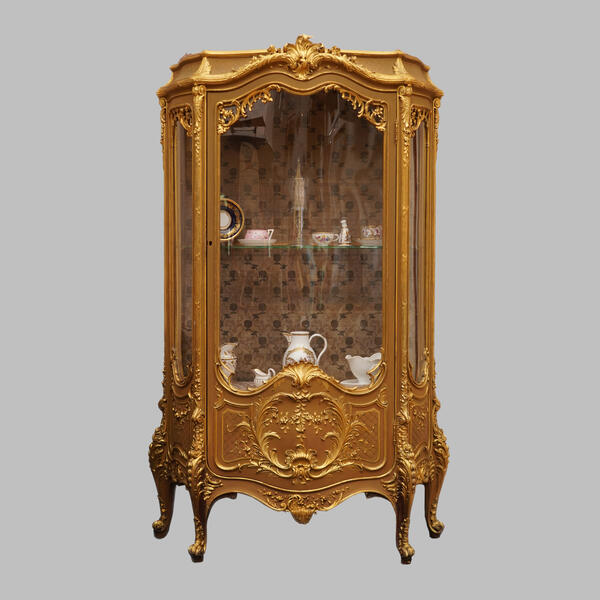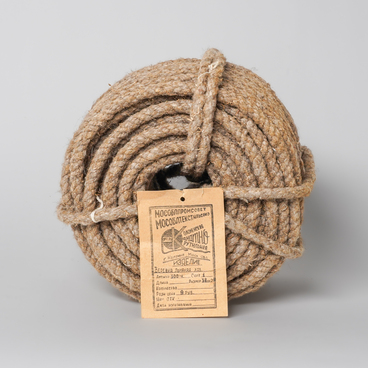Not far from Kolomna is the picturesque village of Severskoye, one of the oldest villages near Moscow. The last owner of the village was Alexander Alexandrovich Naydenov (1839-1916), a Moscow merchant and public figure. After the revolution of 1917, the Naydenov family left the estate and in the 1920s, the Severskoye recreation center named after Comrade Uryvayev was opened there. Some of the furniture of the manor was handed over to the Kolomna Museum.
The 18th-century West-European display cabinet is a jewel in the crown of the museum collection. A display cabinet was an enclosed glazed vitrine, usually small, used for storing and displaying tableware. The most valuable items, relics, and items of personal pride, such as expensive silverware, were displayed in it.
In the 17th–18th centuries in Russia, display cabinets appeared in the homes of wealthy families. They were made from valuable woods such as walnut, oak, mahogany and others. These cabinets were usually inlaid with precious metals and decorated with carving. In the 1920s and 1930s cabinets began to be used as interior decoration. They were placed in living rooms or dining rooms. The name of this cabinet in Russian is “gorka” which means a “hill”. It came into use in pre-revolutionary Russia because these cabinets usually had dishes piled on shelves, one inside the other. The difference between a gorka and a cupboard is that the first has a larger glazed surface and no solid doors.
These cabinets, such as the one in the museum, were often made on commission. Decorated chests of drawers made from high-quality materials were made for luxurious and spacious rooms, while for the poorer population, simple and cheap furniture was mass-produced on a large scale.
The display cabinet shown in the exhibition is decorated with gold leaf, which is a very thin film of gold that is glued onto furniture, stucco and other items for decoration. Gilding has a considerable production cost, as two kilograms of gold are required to produce one kilogram of gold leaf. There are two types of gold leaf gilding: oil gilding and glue gilding. This cabinet is decorated using the glue method, which is the oldest and most time-consuming type of gilding. Its other name is gilding on levkas.
The 18th-century West-European display cabinet is a jewel in the crown of the museum collection. A display cabinet was an enclosed glazed vitrine, usually small, used for storing and displaying tableware. The most valuable items, relics, and items of personal pride, such as expensive silverware, were displayed in it.
In the 17th–18th centuries in Russia, display cabinets appeared in the homes of wealthy families. They were made from valuable woods such as walnut, oak, mahogany and others. These cabinets were usually inlaid with precious metals and decorated with carving. In the 1920s and 1930s cabinets began to be used as interior decoration. They were placed in living rooms or dining rooms. The name of this cabinet in Russian is “gorka” which means a “hill”. It came into use in pre-revolutionary Russia because these cabinets usually had dishes piled on shelves, one inside the other. The difference between a gorka and a cupboard is that the first has a larger glazed surface and no solid doors.
These cabinets, such as the one in the museum, were often made on commission. Decorated chests of drawers made from high-quality materials were made for luxurious and spacious rooms, while for the poorer population, simple and cheap furniture was mass-produced on a large scale.
The display cabinet shown in the exhibition is decorated with gold leaf, which is a very thin film of gold that is glued onto furniture, stucco and other items for decoration. Gilding has a considerable production cost, as two kilograms of gold are required to produce one kilogram of gold leaf. There are two types of gold leaf gilding: oil gilding and glue gilding. This cabinet is decorated using the glue method, which is the oldest and most time-consuming type of gilding. Its other name is gilding on levkas.



